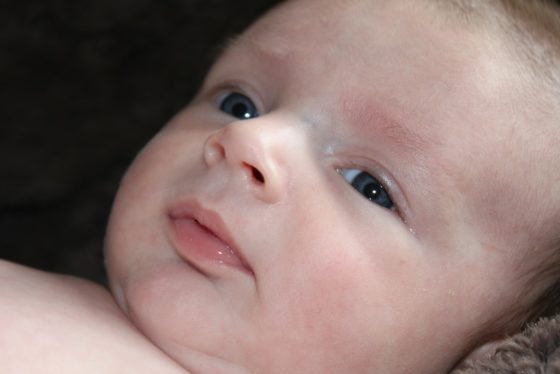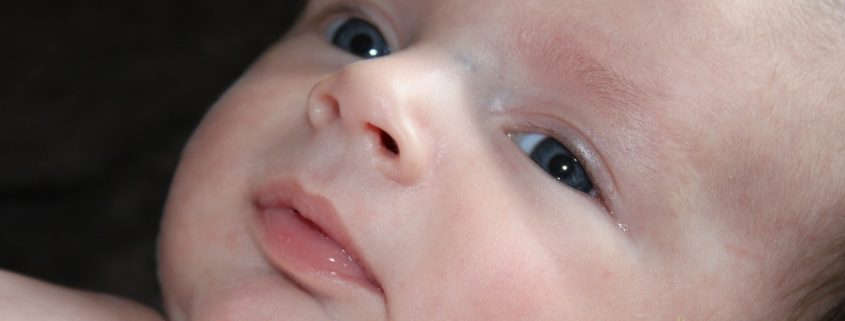What is Horner’s Syndrome?

About 1 in 6,250 babies are born with Horner’s syndrome. This rare condition affects the eye and surrounding tissues on one side of the face. You may also hear it referred to as Bernard-Horner syndrome, Horner syndrome, oculosympathetic palsy, or von Passow syndrome.
Contents
What does Horner’s syndrome look like?
Characteristics of Horner’s syndrome include:
- A constricted pupil on the affected side (miosis)
- A drooping eyelid on the affected side — more often the upper lid, but possibly the lower lid instead (ptosis)
- Lack of sweating on the affected side (anhidrosis)
- A sinking of the eye on the affected side (enophthalmos)
- Differently colored irises in each eye when the condition begins before age 2 (heterochromia)
These symptoms do not seem to affect vision, though the underlying damage can be the result of other, sometimes very serious, conditions. With congenital Horner’s syndrome in infants, it’s possible to have only one of the symptoms, and for symptoms to be intermittent. This can make it difficult for physicians to diagnose Horner’s syndrome.
What is the cause of Horner’s syndrome?
Horner’s syndrome can appear at any age, but 5% of affected individuals have the disorder from birth. It is caused by damage to the nerves of the face, which may be the result of injury or illness.
Nerve damage can sometimes be the result of a tumor in the neck or the brainstem putting pressure on the nerves to the face. Neuroblastoma, a rare form of childhood cancer, is one type that affects the nerve tissues, though many times the involved tumor is benign. A stroke can also cause damage to the brainstem, leading to Horner’s syndrome.
Birth trauma, especially brachial plexus injury, can cause direct damage to the nerves of the neck and face and can lead to Horner’s syndrome. In one study, half the cases of Horner’s syndrome were related to birth trauma where undue traction was used when delivering baby’s head and shoulders. When a baby has total brachial plexus palsy, he should be evaluated for Horner’s syndrome. Surgical repair is often needed in these cases.
Injury to the carotid artery, which supplies blood to the head and neck, can impact nerve function and lead to Horner’s syndrome. Sometimes this is due to a lack of development of the artery, or can be from a tearing of the layers of the artery.
See also: Klumpke’s Palsy: What You Need to Know
How is it diagnosed?
In infants and children, the location of the involved nerves is often different than when the syndrome is acquired as an adult, which can help your child’s care provider to make a differential diagnosis. The signs of Horner’s syndrome may be noticed during a migraine headache; after the headache goes away, so do the symptoms.
Some researchers have suggested that pupil constriction tends to precede eyelid drooping by a week to several months. They conclude that testing should be done on these infants even if there is no eyelid involvement, and parents should be instructed on what other signs to look for and when to seek additional medical help.
If your child’s healthcare provider believes symptoms are consistent with Horner’s syndrome, he will likely suggest evaluation by an ophthalmologist or a neuro-ophthalmologist to an confirm the diagnosis. This eye specialist will typically use eye drops to test how the pupil opens or closes. He will also assess eyelid drooping and color.
Other diagnostic tests that may be ordered include:
- Blood tests
- Magnetic resonance imaging (MRI) of the head and neck
- Ultrasound of the blood vessels of the neck on the affected side
- Xray or CT scan of the chest
Although the eye abnormalities associated with Horner’s syndrome generally do not affect vision or health, it’s important to receive a proper diagnosis, as the nerve damage that causes Horner’s syndrome may result from other life-threatening health problems.
Get Help with Your Baby’s Injury
Unfortunately, there is no cure for Horner’s syndrome. Treatment depends on the underlying cause for the disorder, and prognosis is based on predictions for the underlying complaint. The earlier a diagnosis is made, the sooner a treatment can start.
If you believe your baby’s Horner’s syndrome was caused by birth trauma that was the fault of your medical team, you should speak with a qualified birth injury attorney as soon as possible to determine your rights. You may be eligible for compensation, which can help you pay for medical expenses, in addition to punitive damages.
Contact Safe Birth Project today to see how we can help.
See also:








Leave a Reply
Want to join the discussion?Feel free to contribute!